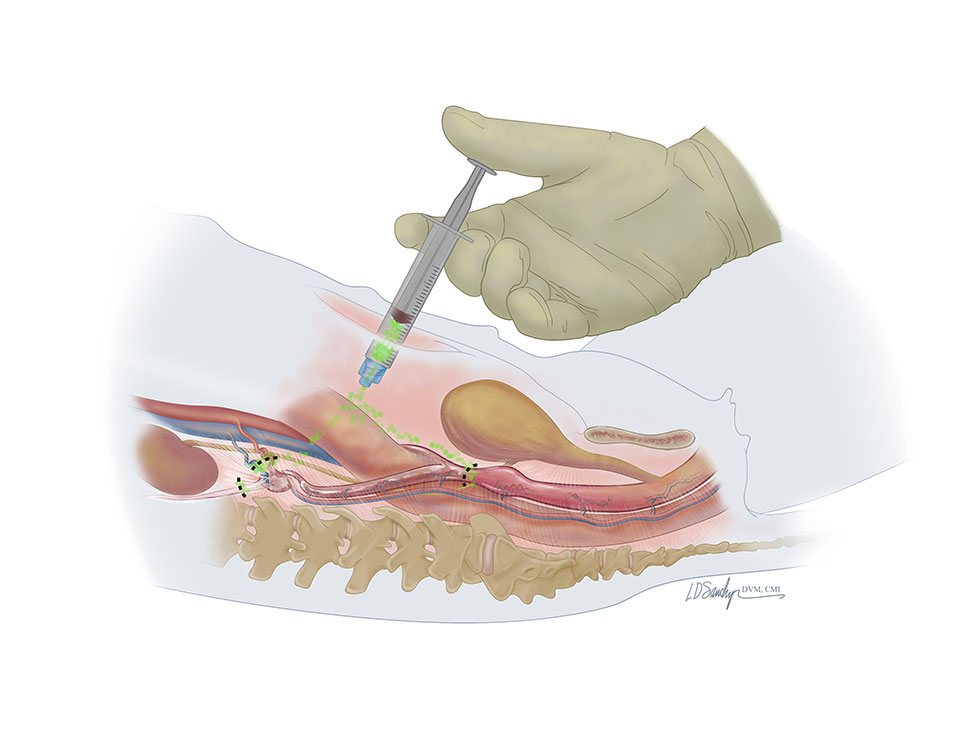Local Anesthetic Techniques For Ovariohysterectomies

Intraperitoneal lavage technique for dogs and cats
INDICATIONS: Feline and canine ovariohysterectomies. (This technique may be more effective than mesovarium block because analgesia will be provided at both the ovarian and uterine surgical sites.)
INSTRUCTIONS:
- Select and calculate the full dose of a local anesthetic, i.e., lidocaine (cats = 2–4 mg/kg, dogs = 4–6 mg/kg), bupivacaine (cats = 1 mg/kg, dogs = 2 mg/kg), or ropivacaine (cats = 1 mg/kg, dogs = 2 mg/kg). If necessary, dilute the drug with saline–the total volume needs to be a minimum of 0.4–0.6 mL/kg to lavage or bathe the entire abdominal cavity.
- Immediately after making the incision or after completing the abdominal procedure but before closing the incision, “bathe” or “lavage” the peritoneal cavity with the local anesthetic by instilling it into the abdomen through the incision (literally just squirting it in the abdomen).*
- Close the incision as usual, leaving the local anesthetic in the abdomen.
*Lavaging the abdomen right after the incision may be more effective (preemptive analgesia) but the local anesthetic could potentially be absorbed by sponges used to blot blood. The goal is to leave the drug in the abdomen. Thus, lavage just prior to closure may be more efficient.
Artwork by Lauren D. Sawchyn, DVM, CMI.
IMPORTANT: The authors, reviewers, and editors of the material in the 2020 AAHA Anesthesia and Monitoring Guidelines for Dogs and Cats have made extensive efforts to ensure that treatments, drugs, and dosage regimens are accurate and conform to the standards accepted at the time of publication. However, constant changes in information resulting from continuing research and clinical experience, reasonable differences in opinions among experts, unique aspects of individual clinical situations, and the possibility of human error in preparing such an extensive text require that the veterinarian exercise individual judgment when making a clinical decision and, if necessary, consult and compare information from other sources. In particular, the veterinarian is advised to check the drug’s product insert before prescribing or administering it, especially if the drug is unfamiliar or is used infrequently.





